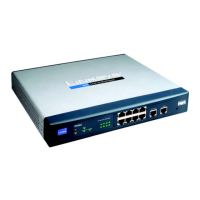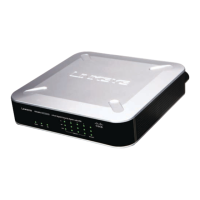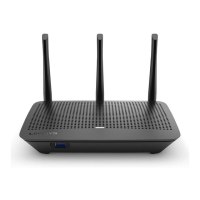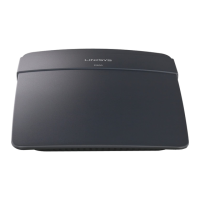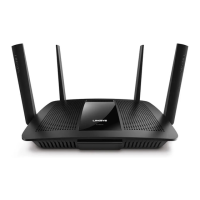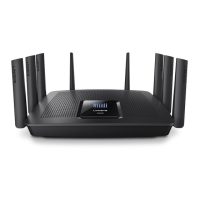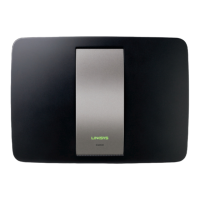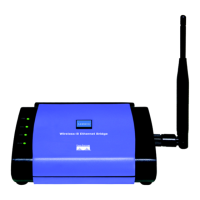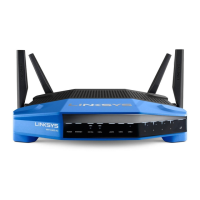49
Chapter 6: Set Up and Configure the Router
VPN Tab - Client to Gateway
10/100 4-Port VPN Router
Remote Client Setup
With Tunnel enabled:
Remote Client: There are five types of Remote Client: IP, IP + Domain Name (FQDN)Authentication, IP + E-mail
Addr. (User FQDN) Authentication, Dynamic IP + Domain Name (FQDN) Authentication, Dynamic IP + E-mail Addr.
(User FQDN) Authentication.
IP Only: If you know the fixed IP of the remote client, you can select IP and enter the IP Address. Only the specific
IP Address that you enter will be able to access the tunnel. This IP Address can be a computer with VPN client
software that supports IPSec.
IP + Domain Name(FQDN) Authentication: If you select this type, enter the FQDN (Fully Qualified Domain Name)
and IP address of the client user with VPN client software that supports IPSec at the other end of the tunnel. The
FQDN is the host name and domain name for a specific computer on the Internet, for example,
vpn.myvpnserver.com. The IP and FQDN must be the same as the Local Gateway of the remote client, and the
same IP and FQDN can be used only for one tunnel connection.
IP + E-mail Addr.(User FQDN) Authentication: If you select this type, enter the e-mail address and IP address of
the client user with VPN software that supports IPSec at the other end of the tunnel.
Dynamic IP + Domain Name(FQDN) Authentication: If you select this type, the Remote Security Gateway will be a
dynamic IP, so you don’t need to enter the IP address. When the Remote Security Gateway requests to create a
tunnel with the RV042, the RV042 will work as a responder. If you select this type, just enter the Domain Name for
Authentication, and the Domain Name must be the same as the Local Gateway of the remote client. The same
Domain Name can be used only for one tunnel connection, and users can’t use the same Domain Name to create
a new tunnel connection.
Dynamic IP + E-mail Addr.(User FQDN) Authentication: If you select this type, the Remote Security Gateway will
be a dynamic IP, so you don’t need to enter the IP address. When the Remote Security Gateway requests to create
a tunnel with the RV042, the RV042 will work as a responder. If you select this type, just enter the E-mail address
for Authentication.
With Group VPN enabled:
Remote Client: There are two types of Remote Client: Domain Name (FQDN) or E-mail Address (User FQDN).
Domain Name (FQDN) (Fully Qualified Domain Name): If you select FQDN, enter the FQDN of the Remote Client.
When the Remote Client requests to create a tunnel with the RV042, the RV042 will work as a responder. The
Domain Name must match the local settings of the Remote Client.
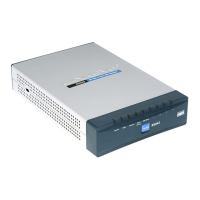
